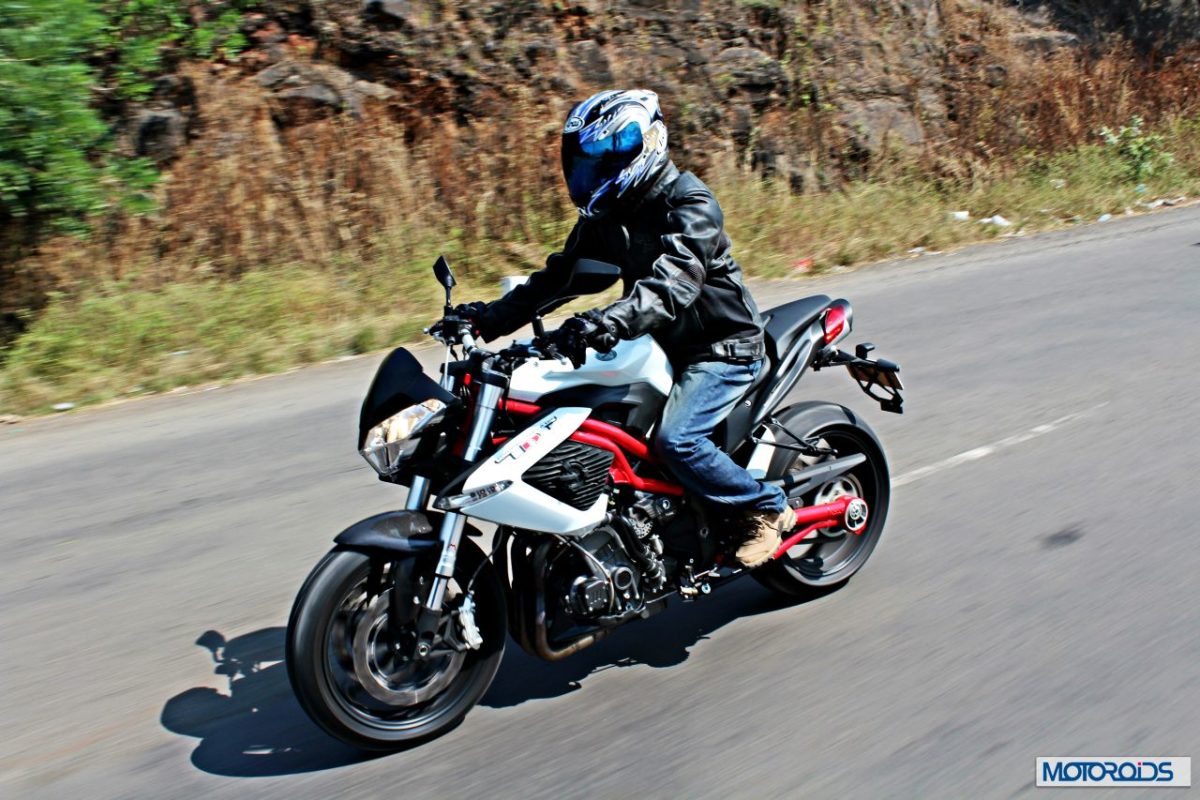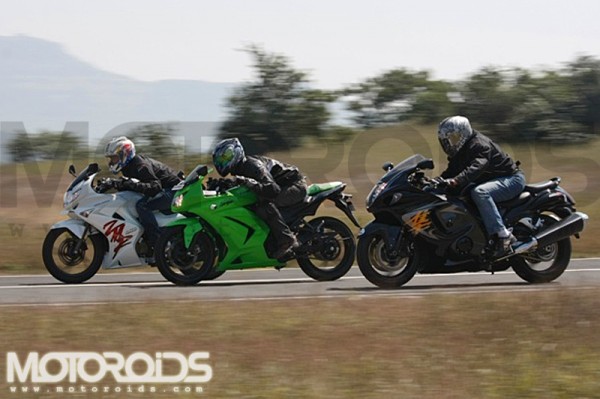In chapter one of our edition of – Ride Safe with Motoroids, we mentioned all the things that a rider needs to do and ensure before setting off on a motorcycle. These included basic preparations and checklists that every rider must conduct before embarking on any journey. But now, it’s time to go one step beyond the basics and mention few other things that every beginner rider must keep in mind while on the move.
Proper use of your bike’s lights and importance of signalling
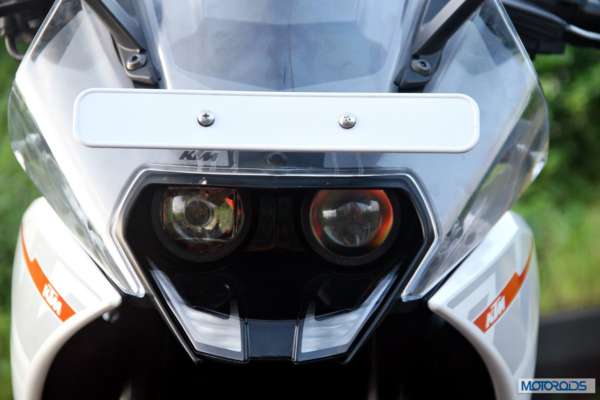 Some new bikes such as the RC390 from KTM, have projector headlamps & daytime-running lights.
Some new bikes such as the RC390 from KTM, have projector headlamps & daytime-running lights.
Lights on your motorcycle are meant to be used as and when the circumstances demand. However, for reasons unbeknownst to us, some riders keep them switched off. Apart from providing illumination in underlit areas, headlights also inform other motorists of your presence. Projector and High Intensity Discharge (HID) headlamps, such as the ones found in high-end cars (for eg. BMWs), aren’t uncommon on some expensive bikes. Some newer bikes even come equipped with daytime-running lights, which apart from looking cool and futuristic, also aid the rider being spotted by others on the road. Such lights are a regulation in most western countries to ensure visibility to other road users even on days when there is haze or fog on the road, reducing visibility.
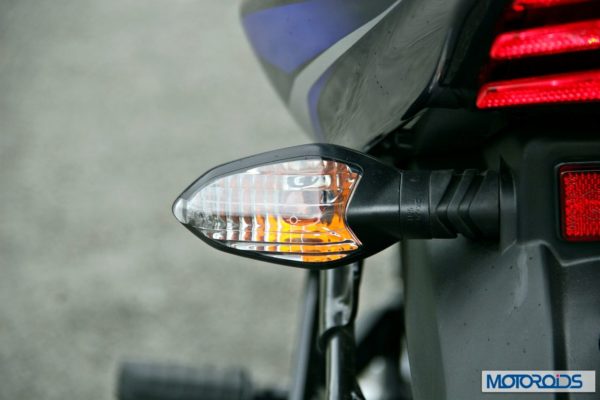
Turn indicators aren’t there just to make your bike look good, they also serve a vital safety purpose.
Apart from headlights, proper use of tail-lights and indicator lights is also very important for safety, regardless of the time of the day. Every rider should be aware of the lights on their bike and use them to the fullest. Signalling is crucial, not only while executing a turn, but also when you wish to overtake slower moving traffic or change lanes. Many take these procedures for granted and turn without signalling, which can prove dangerous. Signalling alerts other motorists of your intentions and it’s just a flick of your thumb away. So be responsible and let others around you know what you are up to. Inculcate the habit of indicating even when you observe little to no traffic in your vicinity.
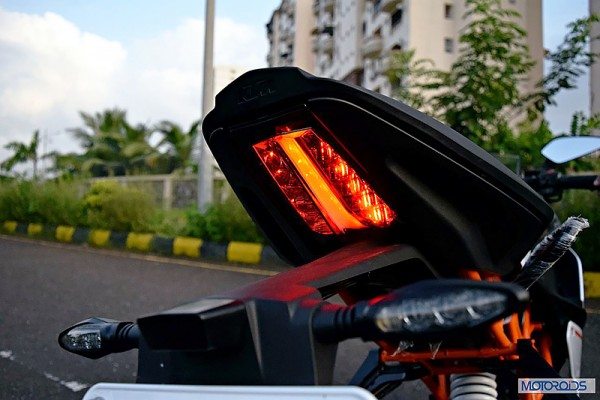
Always make sure your brake lights work when you apply the brakes.
Brake lights serve an important function by letting people directly behind you know that you are decelerating. Thus, their proper functioning helps prevent other vehicles from slamming into the back of you. That said, it isn’t uncommon to see a bike which has non-functioning taillights and the rider being very callous about it. Ensure that your motorcycle’s tail-lamps are fully functional. Always look into your rear view mirrors, stay within a controllable speed and apply brakes in a progressive manner so that the following road-users get ample buffer to brake in time.
Overtaking requires more than just power
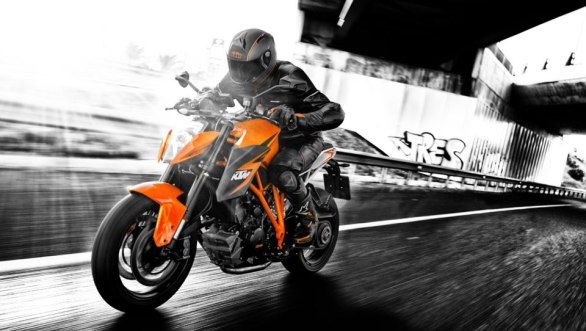
Overtaking isn’t rocket-science, but it pays to be cautious and sensible.
Everyone performs an overtake maneuver – on a highway or on city streets. However, for motorcyclists, this seemingly simple task can quickly lead to a sticky situation. Don’t get all excited upon witnessing an open space or gap. A rider must first perform a thorough check of the immediate vicinity in and around the bike. Have a look in the mirrors and glance over your shoulder for other road users – eliminate any chances of someone sneaking through that small blind spot. Once that’s done and you are certain that it is safe to switch lanes, flip on your indicator first and then perform the overtake.
For overtaking on single carriageways, where you see oncoming trafffic in a distance, ensure you use the day flasher the opposing traffic about your intent to overtake. Never go for those small gaps, ensure that you have ample speed and space to perform an overtaking maneuvre safely enough.
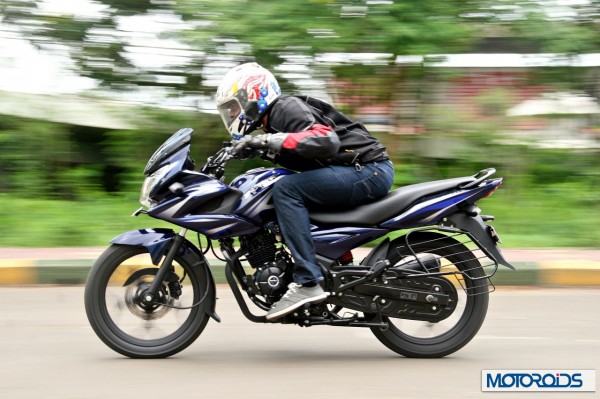
Overtaking need not be risky, if you use your indicators and a pinch of common sense.
Ride a safe distance behind bigger vehicles. Not only this gives you ample buffer to brake in case the vehicle ahead applies sudden brakes, it also gives you a decent window to glance at oncoming traffic and saves you from a nasty surprise as you peep out.
Braking – Know your own and the biker’s limits
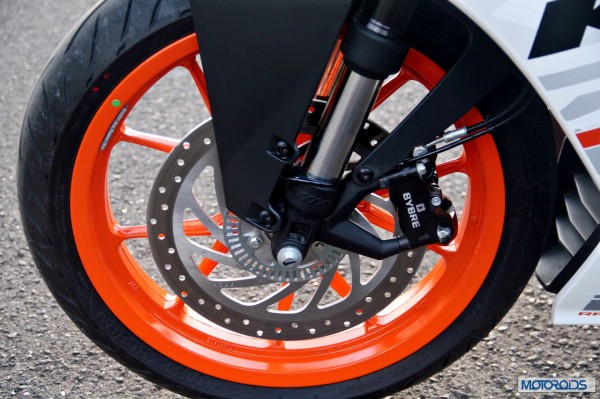
Some bikes come equipped with anti-lock brakes, a godsend for motorcyclists.
Braking on a motorcycle is not the same as braking in a car. A car isn’t prone to a flip-over under braking, nor does it toss the driver onto the pavement when the brakes are jammed during an emergency. A bike is also more prone to losing balance upon facing a rough patch during braking. Jumping on the brakes in an emergency, could quickly lead to a loss of control of your bike. One of the best safety nets when trouble comes along and an emergency braking is required, is anti-lock braking system or simply, ABS.
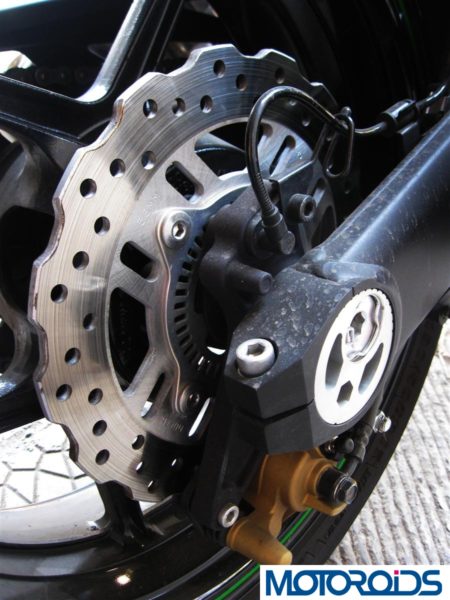
ABS setup on Kawasaki Z1000’s rear brake.
Bikes equipped with ABS, will prevent the brakes from locking up and thus, allow for controlled, progressive deceleration without a loss of control. There are techniques related to application of brakes on bikes, which we will discuss in detail in our later chapters. For starters, though, ABS systems work better for a more controlled braking experience. One should, however, learn to modulate brakes and use both front and rear brakes together to ensure the most effective and safest braking.
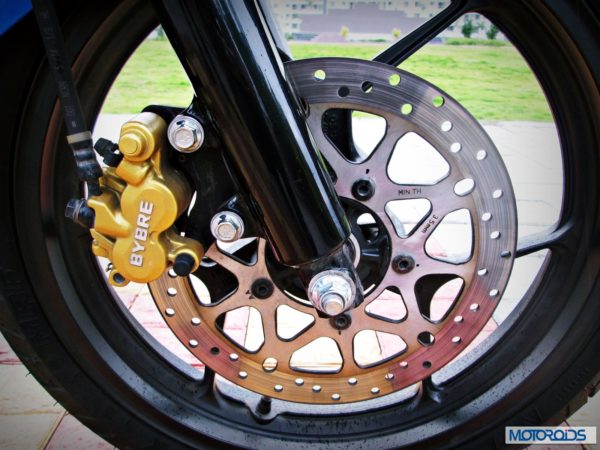
This Suzuki Gixxer 155 has a decent-sized disc at the front, but no ABS.
It isn’t the end of the world if your bike lacks ABS-equipped brakes. We think, knowing your bike and its limits well, helps just as much, if not more. Start off by practicing emergency stopping maneuvers in an empty parking space or someplace similar. Try to find the sweet spot between the use of your front and rear brakes. For example, grabbing a handful of the front brake, will result in a dramatic weight-shift towards the front. That causes your rear wheel to lift in the air and if you lose your awareness, can result in you hitting the pavement.
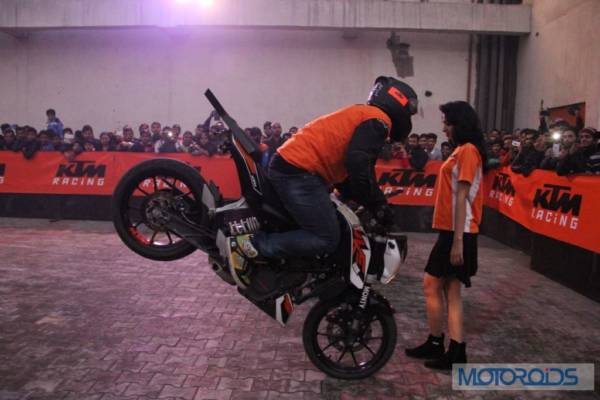
Aggressive forward weight-shift causes the rear wheel to rise. (Picture for illustration purpose, only.)
On the other hand, going too hard on the rear brake can lead to a lock up of the rear tyre and cause a nasty skid. Again, the result will be you hitting the pavement. Know your bike’s capabilities and your limits as a rider, well . A good grasp of these, will boost your confidence and help you remain calm and collected when an emergency demands your quick reaction.
Keep those visors shut
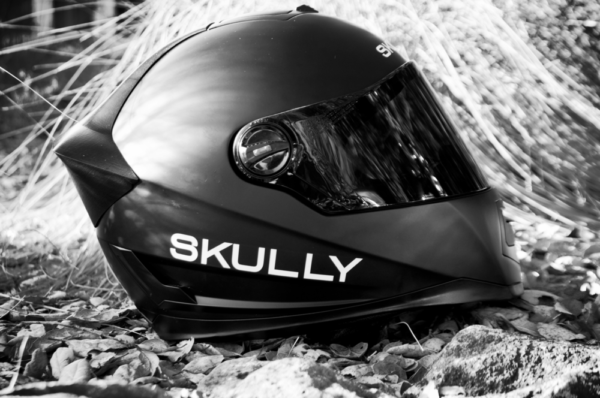
Keeping those visors down is more important than you think.
Most riders know the importance of wearing a helmet. However, many don’t realise the significance of keeping the visor of their helmet closed. Some riders find excuses to not close the visor, but that can lead to several issues, even in a crash. Visors are meant to keep the wind blast from hitting your face and also fend off that rogue insect willing to sacrifice itself for a head-on impact with your eyes. During rains, the visor keeps your face from getting wet and rain droplets from hitting your face, which can be quite painful if you are at speed. And in polluted cities, this thin shield will stop you from breathing in toxic exhaust fumes with a little aid from a balaclava. Oh, and they are also pretty good at keeping dust away. So kindly do yourself a favour and keep those visors shut.
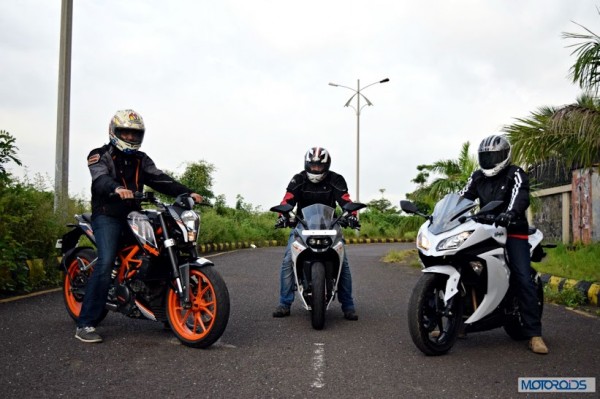
Always wear your safety gear and ride responsibly.
There are so many aspects concerning safety on two wheels, that it’s just not possible for us to cover all of them in one go. This chapter was just a small piece of the pie on safety for beginner riders, an initiative by Motoroids. We will keep more chapters coming in the future, covering more advanced aspects of riding. In the meanwhile, ride safe and be responsible. Remember, prevention is always better than cure.

